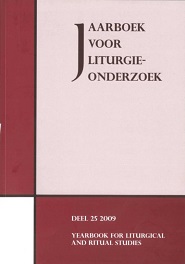En leyt buyten ende is nu binnen. De inrichting van de Leidse Pieterskerk omstreeks 1400 volgens het memorieboek Den Haag, KB, 73 E 41
Abstract
Medieval necrologies and other memorial records may not only help genealogists and prosopographers: some are also useful for the reconstruction of the building history of Medieval churches. The fourteenth-century memorial register of St. Peter’s at Leiden, now in the Royal Library at The Hague, is a fine example. One of three similar records, it specifies the location of graves and altars in the pre- or protogothic precursor of the present church, built between 1380 and 1450. With its unique topographical data, it not only serves as a guidebook of the old church, but also as a chronicle of the early construction stages of the new one. The pre- or protogothic St Peter’s church appears to have had a tower with a westwork; a basilical nave with two entries, a pulpit and several rows of benches; two organs; and a crypt; but no transept. Religious women from the nearby St. Agnes’ Beguinage would attend mass in the crypt, but were allowed to emerge to watch consecration. Liturgy as a whole was tailored to the needs of upper class ladies who would listen to a sermon before coming forward to ‘take peace’ in an order determined by social rank. In spite of competition with other local churches, elite funeral culture was flourishing at St Peter’s around 1400. The relatively modest number of family altars was perhaps due to tensions with the Teutonic Order. Until 1574, the parson of St Peter’s was always a member of this militant and ambitious organization.


